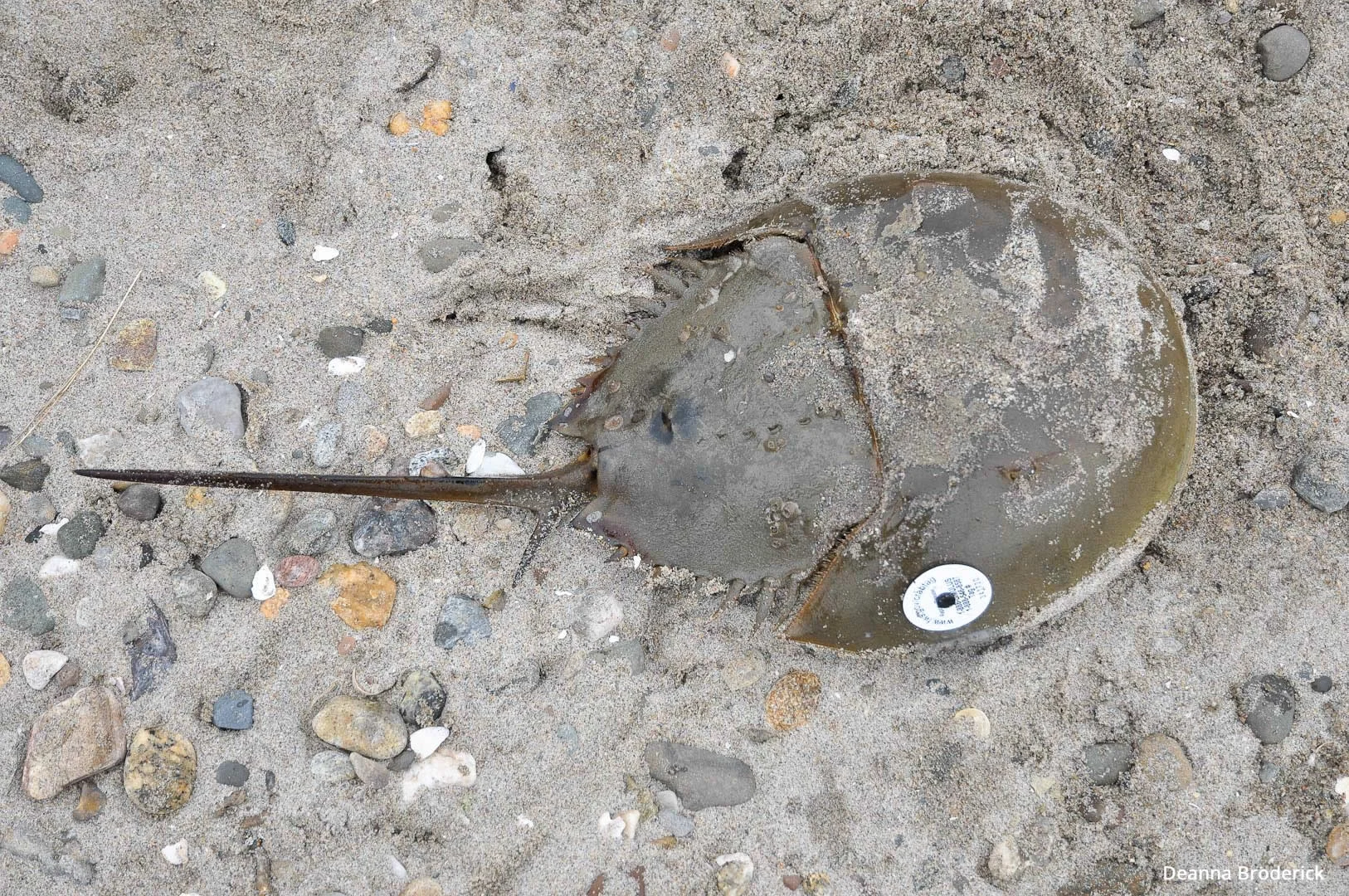The familiar horseshoe crab is not a true crab but more closely related to spiders and mites. While crabs are members of the class crustacea, horseshoe crabs are the only living members of the ancient class merostoma that was once widespread and abundant. Fossil remains show us that during the last 200 million years little has changed about them and they are considered to be “living fossils.”
Horseshoe crabs roam the shallow seas below the low water mark along the Atlantic and Gulf coasts from Maine to Mexico.
Horseshoe crabs grow up to 20 inches long with a slender tail, a broad abdomen, and a still broader foresection. They have ten eyes, seven eyes on the top of the front shell, two on the underside near the mouth, and one on the tail. The abdomen is edged by movable spikes which protect the gills. The tail is not a stinger or a poisonous barb but a tool that horseshoe crabs use to right themselves.
Deanna Broderick
Horseshoe crabs mate in May and June when females use the highest tides – associated with the new or full moon – to crawl up on the beach. They drag the smaller males around until the eggs are laid in a depression in the sand. The males fertilize the eggs and both the males and females return to the sea. The eggs hatch in midsummer and the young horseshoe crabs make their way to the sea where they remain until they breed at nine or ten years of age.
Ruddy Turnstone, Red Knot, and Semipalmated Sandpipers. USFWS
Horseshoe crabs of Delaware Bay provide a critical food source for about a million migratory shorebirds that pass through that region every spring. After spending the winter in South America, species such as the Red Knot, Ruddy Turnstone, Semipalmated Sandpiper and Sanderling feast on protein-rich horseshoe crab eggs before moving on to their Arctic breeding grounds. For most of these birds, Delaware Bay is the most important stopover on a migratory journey of up to 10,000 miles.
Though horseshoe crabs are found along the Atlantic coast, the Delaware Bay population is the world’s largest. USGS biologist and statistician Dr. David Smith, of the Leetown Science Center, says the bay’s long stretches of protected, sandy beaches provide ideal habitat for spawning. “What has evolved is a dependence of migratory shorebirds on the superabundance of horseshoe crab eggs in Delaware Bay,” Dr. Smith says.
Unfortunately, the shorebirds may find this crucial food source disappear in the near future as humans continue to overharvest the adult horseshoe crabs to use as fishing bait.
Horseshoe crabs of Long Island Sound are less well known and are the subject of the ongoing Project Limulus.

